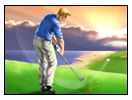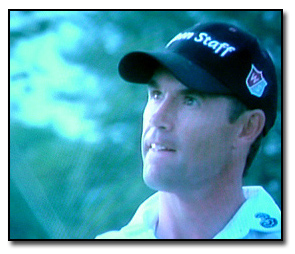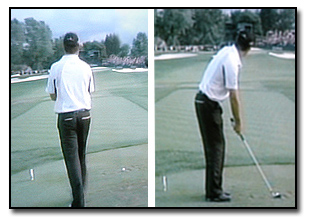 Every golfer should look at their off course training time as a chance to perfect their golf practice swing.
Every golfer should look at their off course training time as a chance to perfect their golf practice swing.
But the golfer who treats practice time with an on course, “real world” mentality is way ahead of the typical recreational golfer.
Any fan of Golf is no doubt familiar with 2008 British Open and PGA Champion Padraig Harrington’s work ethic. According to reports, he’s either on the range or in the exercise room when he is not playing.
Add to that an intense practicing of the fundamentals and some of the reasons for his success start to come together.
What can you learn from Padraig’s routine?
When it’s time to practice, find a favorite spot at the end of the range, away from distractions and get down to business.
I firmly believe there are two types of practice, training and simulated play.
In training, you may be working on swing thoughts, positions, and mechanics. This can be a technical time to systematically try new things, get feedback, and make adjustments.
The other type of practice should be simulated play. This gears your mind to real situations on real courses.
Think these Irish eyes saw this shot on the 17th a hundred times before Sunday’s final round?:

Here’s a scenario for your practice time:
-
Treat the practice stall or area as if it is a real tee box. Stand behind the tee and pick a target, a real target. Not just “towards the 250 sign” but “at the 250 sign”, and better yet at the “5” in 250. The smaller the target the better.
-
Imagine this is a real hole. Hit a driver or 3 wood at that sign. For the next shot, use the typical iron that you may use on a 400 yard hole. Now aim at the 150 sign as if it is a pin.
-
Did you hit it?! If not, what’s left? Take out a wedge and chip to the 25 yd sign, or a target immediately in front of your practice station.
This routine will help you in many ways. It prevents you from getting in that machine gun mode of firing off 25 balls without so much as a break, hoping that the next one is better. It also trains the mind for simulated play.
Next time out on the course, your mind will be more focused on targets and distances, and your decisions will be clearer.
Here Paddy’s “locked and loaded”. He now just needs to execute:

Keeping with the simulated play theme, if you have access to a practice range with real turf, by all means take advantage of this feature.
Hitting mats can be flattering to good and poor swings because you can not take real divots. They are very forgiving as a typical “fat” shot may appear to have been hit purely, or at least salvageable.
Grass practice turf empowers you to hit the ball first and then take a divot. Plus, you will be looking down at real grass which will invariably work into your memory for on course play. Your 7 iron sitting behind that ball on the course will recall the same image from the range.
You may need to practice on synthetic mats first in order to build confidence and that is fine. When you feel ready, make the transition to turf practice and work in the simulated play routine.
When you are finished with a practice session, you will feel like you just played 27 holes (except for the walking)!
And as you leave the range and spot a league member beating balls to no end, just smile knowing you’ve moved one step closer to playing like the current #3 (and moving up) player in the world.
Hit’em straight this weekend – Rob C.
